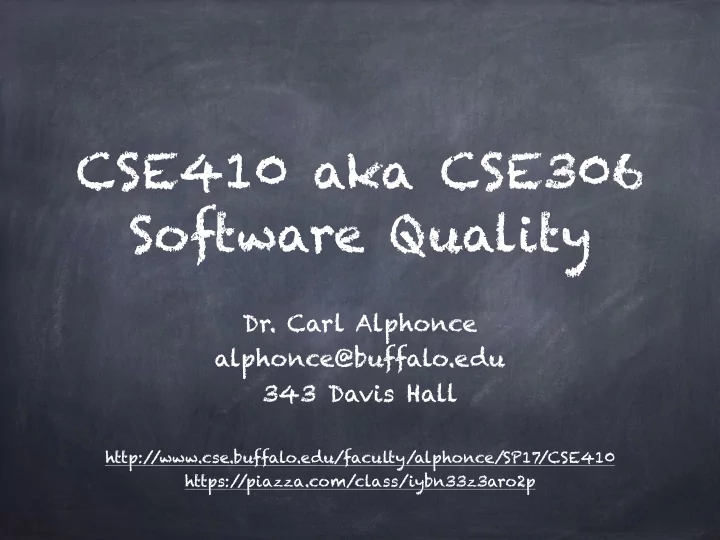

CSE410 aka CSE306 Software Quality Dr. Carl Alphonce alphonce@buffalo.edu 343 Davis Hall http:/ /www.cse.buffalo.edu/faculty/alphonce/SP17 /CSE410 https:/ /piazza.com/class/iybn33z3aro2p
Robert Burns The best laid schemes o' mice an' men Gang aft a-gley, [often go awry] An' lea 'e us nought but grief an' pain, For promised joy. [http:/ /www.phrases.org.uk/meanings/the-best-laid-schemes-of-mice-and-men.html]
blackbox vs whitebox testing
blackbox testing Code is treated as a "black box", one which you cannot peek inside Tests are written without regard to HOW code is written Tests are meant to capture the intended behavior of the system (the requirements/specifications): WHAT the code should do In Test Driven Development (TDD) tests are written before the code is, and so qualifies as black-box testing (though maybe it would be more accurate to call it no-box testing) In TDD, think of tests written to capture specifications as executable specifications
whitebox testing Tests are written taking into consideration HOW the code is written Use a code coverage tool to ensure that tests exercise all possible computation paths
Code coverage We will use gcov as our coverage tool. Compile with extra flags, as in: gcc -g -O0 -Wall -fprofile-arcs -ftest-coverage -L /util/CUnit/lib -I /util/CUnit/include/CUnit/ evaluate.o expression.o expressionOption.o primitiveOption.o stack.o tests.c -o tests -lcunit -lgcov
using gcov to verify test coverage compile test code with extra flags this instruments code to gather coverage information run tests this runs your tests and allows the instrumentation to collect coverage data that shows what parts of the implementation were exercised by the tests run gcov on the source file (e.g. source.c) whose coverage you're interested in exploring Look at the file produces by gcov (e.g. course.c.gov)
Classroom exercise Write tests to achieve 100% code coverage for the LEX03 evaluator.
Recommend
More recommend